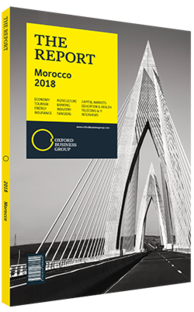Benbrahim El Andaloussi, President, Institut des Métiers de l’Aéronautique (IMA): Interview

Interview: Benbrahim El Andaloussi
What measures and incentives have contributed to the growth of the aeronautics industry?
BENBRAHIM EL ANDALOUSSI: The Moroccan government and the Moroccan Aerospace Industries Association ( Groupement des Industries Marocaines Aéronautiques et Spatiales, GIMAS) initiated an incentive scheme for incorporating foreign companies in the domestic aeronautics industry. These companies also constitute the cornerstone of the 2014-20 Industrial Acceleration Plan, which is set to create 23,000 new jobs by 2020 and double the number of aerospace companies to 200. What is essential, in this respect, is that Morocco today is in a highly competitive position at the door of Europe. Since numerous European countries have seen their competitiveness lowered throughout the process of European integration, Morocco has become an aeronautics base at the gateway between Europe and Africa. This was exemplified in September 2016, when the Moroccan state signed a contract with Boeing, which not only recognised Morocco as a regional aeronautics hub creating 8700 new jobs, but also recognised it as the most competitive base in the natural prolongation of Europe. In addition, the success of aeronautics today stems from the fact that one must have passed Morocco first in order to competitively penetrate the European market. Similar to how Mexico is the most competitive base at the very frontier of the US, we are at the door of both Europe and Africa.
How has the industry benefitted from the public-private partnership model?
EL ANDALOUSSI: Traditionally, a schism exists between educational institutions and industry players, which hinders innovation to a large extent. However, the domestic aeronautics industry is characterised by a synergy of the public and the private sector. The IMA illustrates this quite vividly, as it provides aerospace companies’ employees with the necessary industry technical skill set, an endeavour that has been supported by a number of international organisations, notably the French Development Agency. However, this is only made possible through the fruitful collaboration between the Moroccan state and industry on one side, and the partnership between GIMAS and the French Union of Industries and Trade on the other. Thus, this partnership has enabled us to set up an institute financed by the state and piloted by industrialists, while using industry expertise to train a skilled aeronautics labour force.
What are the biggest challenges faced by foreign investors in the aeronautics industry?
EL ANDALOUSSI: The global aeronautics industry is principally dominated by a competitive duopoly of Boeing and Airbus, and supported by a small number of engine manufacturers such as GE, Rolls Royce, Safran and Pratt & Whitney. As Boeing and Airbus have been competing for decades, it has been in their strategic interest to subcontract nearly 70% of their activities to gain competitiveness and push suppliers to continually reduce their costs. However, in order to achieve this drop in costs and gain a competitive advantage, providers must persistently demonstrate innovation in technological breakthroughs. This necessitates setting up operations in an offshore base, which is why Boeing had Morocco in its sights as a base. At the same time, suppliers keep on settling in Casablanca, which, if the current pace is maintained, is likely to become the European-Mediterranean regional base in the years to come. Nonetheless, the key challenge for the aeronautics segment in Morocco is our ability to meet the needs of industry in terms of qualified human resources. While aeronautics companies contribute technology and market access, the Moroccan state provides subsidies for companies to relocate to the country. Above all, we require skills and talent. The creation of the IMA was a very strategic measure for the sustainability and development of the sector. Without it, Morocco would most likely not be the aeronautics hub that it is today.
You have reached the limit of premium articles you can view for free.
Choose from the options below to purchase print or digital editions of our Reports. You can also purchase a website subscription giving you unlimited access to all of our Reports online for 12 months.
If you have already purchased this Report or have a website subscription, please login to continue.

